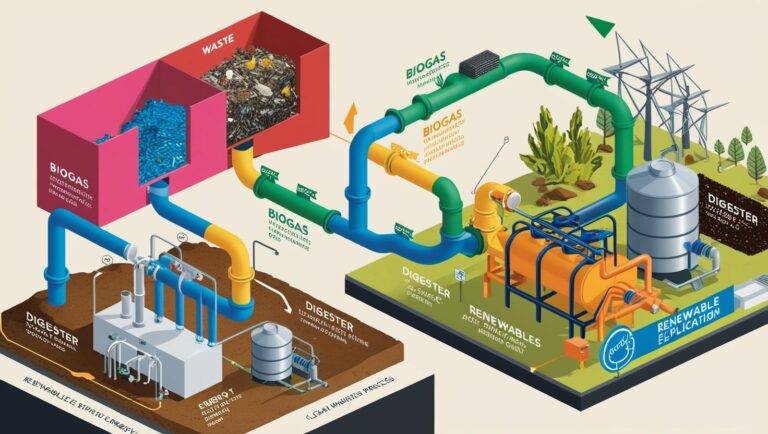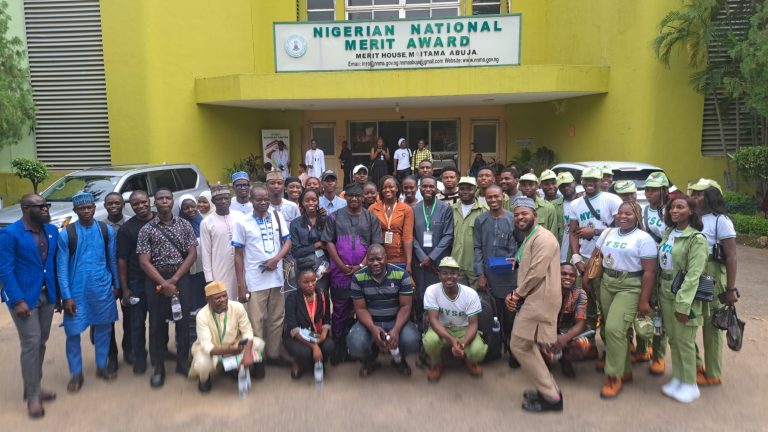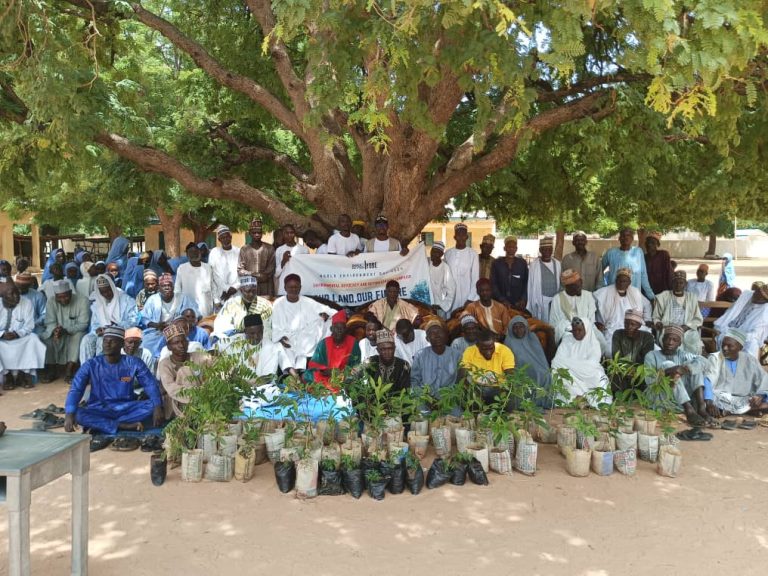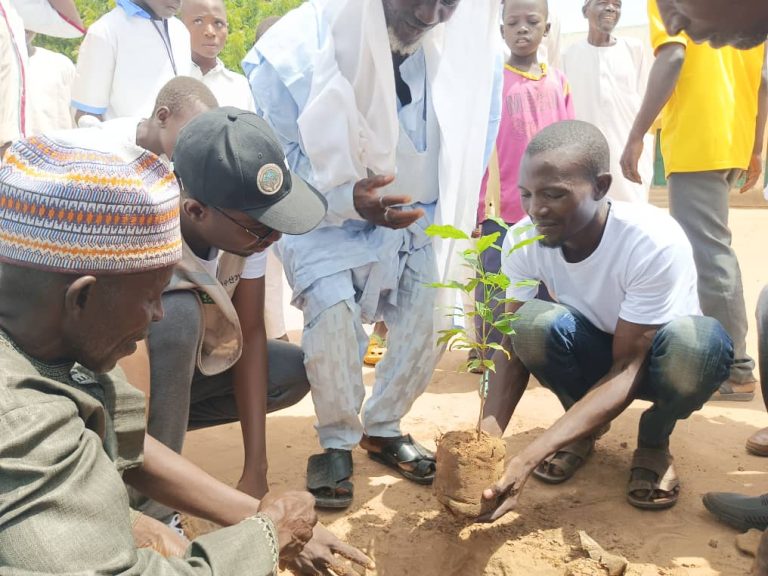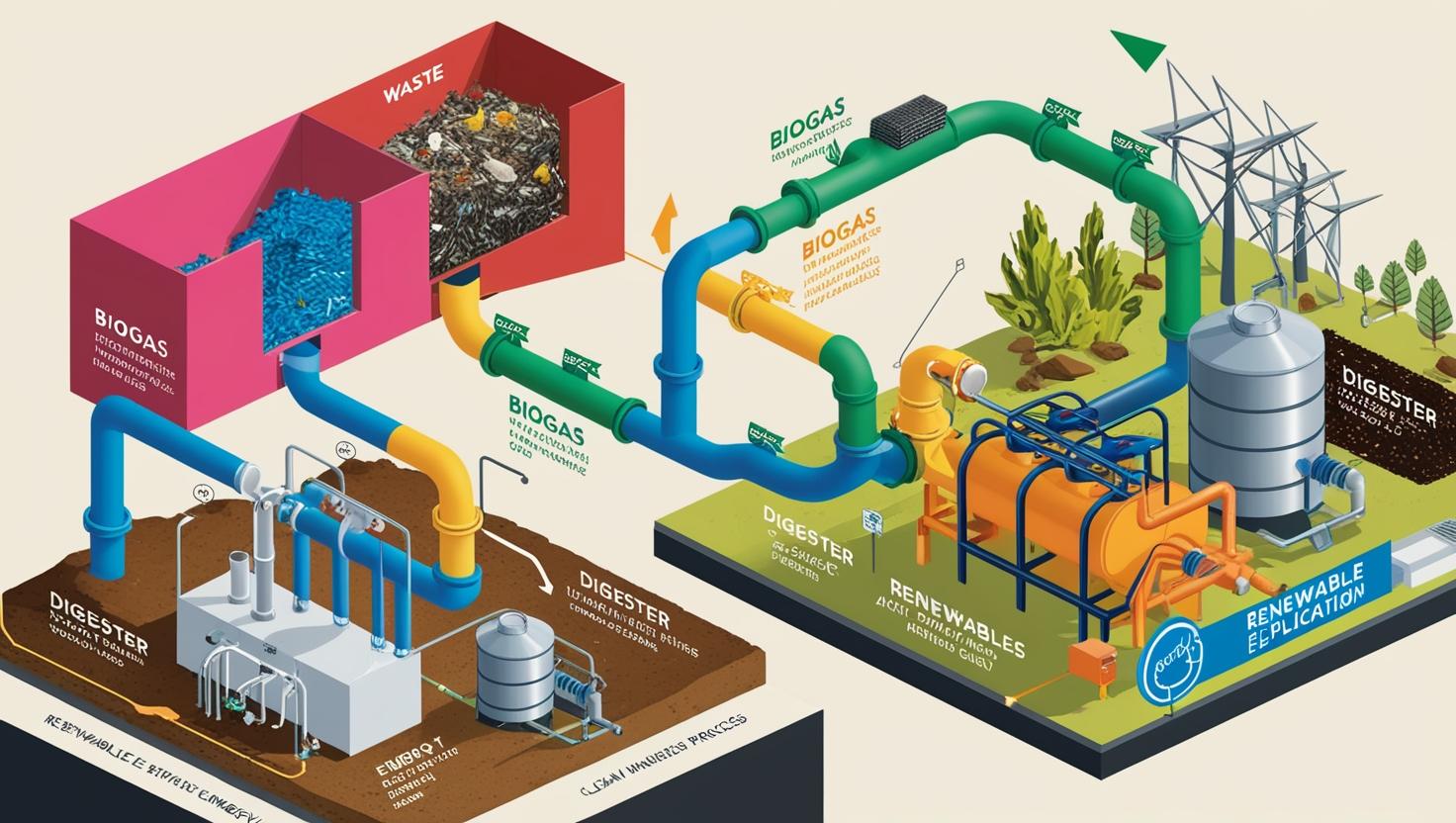Sustainable Food Preservation Using Greenhouse Solar Dryers – A Case Study in Northeast Nigeria – by Israel John.
The Northeast Nigeria is prone to conflict at outstanding levels, coupled with the effects of climate change, leaving several communities homeless, disrupting sources of livelihoods (mostly farming and trading), and exposing victims to harsh conditions of hunger and strife.
Such families often rely on open-air sun drying to preserve their produce, a traditional method that leaves food exposed to dust, insects, rain, and spoilage.
To solve this problem, the Nigeria Local Coalition Accelerator (NLCA) and the Ambassadors of Dialogue Climate and Reintegration (DCR) introduced the greenhouse solar dryers, an innovative and sustainable solution.
These locally built drying tents are helping farmers in Mubi North, Michika, Hong, and Gombi (Adamawa State) preserve food more safely, efficiently, and sustainably.
Advantages/Risks of Open-Air Sun Drying
- Low Cost: Open-air sun drying requires minimal investment since it primarily relies on natural sunlight.
- Simplicity: The process is easy to set up and doesn’t require complex technology or equipment.
- Environmentally Friendly: Since it uses only sunlight and air, open-air sun drying has a minimal environmental impact.
- Widely Accessible: Open-air sun drying can be used in many regions with plenty of sunlight, especially in tropical and subtropical climates.
Disadvantages/Risks of Open-Air Sun Drying
Many people still rely on the traditional method of spreading their crops under the sun, often without proper storage or modern processing methods. Open-air sun drying is particularly appealing due to its cost-effectiveness, simplicity, and accessibility, making it an option for families who have fled their homes due to violence or climate shocks. For these displaced families, preserving food is a daily struggle. However, this traditional drying method comes with significant risks:
- Contamination and Pest infestation: Food is exposed to dust, dirt, and animals, making it unsafe to eat.
- Mold and Spoilage: If the drying process is interrupted by rain or humidity, there is a risk of mold growth and spoilage.
- Weather damage: Sudden rain, storms, or high humidity can destroy entire harvests.
- Long Drying Times: Sun drying typically takes much longer compared to other methods, such as mechanical drying.
- Nutrient Loss: Extended exposure to sunlight depletes the food’s nutritional content.
- Slow drying: Takes too long, increasing the chance of mold and waste.
Because of these challenges, many families lose a large portion of their food before it even reaches their plates or the market, worsening hunger in an already fragile region.
The Solution: Solar-Powered Greenhouse Dryers.
To promote sustainable food preservation and reduce waste, NLCA and DCR Ambassadors developed simple, innovative, and affordable solar dryers using locally sourced materials. These greenhouse-style drying tents trap sunlight to generate heat, allowing crops to dry faster and more safely than traditional open-air methods by effectively removing moisture.
Advantages of the Solar-Powered Greenhouse Dryers.
- Protection from pests and dirt: The covered tent keeps food clean and protected
- Faster drying time: Reduces the risk of spoilage and mold.
- Enhanced food quality: Preserves natural taste, color, and nutritional value.
- Energy-efficient: Operates solely on solar power, eliminating the need for fuel or electricity.
Disadvantages of the Solar-Powered Greenhouse Dryers.
- Intermittent Solar Energy Supply: Solar energy is dependent on weather conditions.
- Maintenance of Solar Equipment: Solar panels and other components like batteries require periodic maintenance to ensure optimal performance.
- Energy Storage Limitations: Energy storage systems (e.g., batteries) are necessary to ensure continuous drying when sunlight is unavailable, but they can be costly and have a limited lifespan.
- Efficiency Concerns in Extreme Climates: In regions with extremely cold climates or during winter, solar energy production may be significantly reduced.
- Technical Complexity: Setting up and operating solar-powered greenhouse dryers requires technical knowledge, particularly in managing solar systems and understanding the drying process.
Transformational Story at Adamawa State.
Since its inception, the project has trained local farmers and food processors in Mubi North, Michika, Hong, and Gombi on how to build, use, and maintain these solar dryers. The response has been encouraging:
- Families can now store food for months without it spoiling.
- Farmers earn more by selling higher-quality dried produce.
- Women, who often handle food processing, save time and labor.
This isn’t just about food, it’s about giving people back control over their meals and income, even in tough conditions.
Partnerships and the Way Forward.
With support from The Share Trust and Warande Advisory, this project proves that local solutions, backed by smart partnerships, can make a real impact. The goal is to expand this technology to more communities and explore ways to make it even more affordable and adaptable.
When comparing the advantages and disadvantages of solar-powered greenhouse dryers and open-air sun drying, solar-powered greenhouse dryers offer superior and more sustainable benefits. They provide controlled drying conditions that significantly improve food preservation and reduce post-harvest losses. Farmers who adopt this technology report notable improvements in the quality and lifespan of their produce, leading to less food waste, extended shelf life, and higher market prices. This makes solar-powered greenhouse dryers a more reliable and economically viable solution for modern agricultural drying needs.
The solar dryer project in Adamawa State shows that simple, sustainable ideas can transform lives, even in the hardest-hit areas.
References:
FAO. (2018). Post-harvest management and food loss reduction. Food and Agriculture Organization of the United Nations.
Solar Energy International. (2019). Solar Drying: A Practical Guide for Farmers and Rural Communities.
Panchal, S., & Vyas, S. (2018). Comparison of Sun Drying and Solar Drying for Agricultural Products: A Review. International Journal of Research in Engineering and Technology.
Kumar, P., Sharma, A., & Singh, R. (2020). Solar drying technology for post-harvest management of food: A review. Renewable and Sustainable Energy Reviews, 122, 109710.



